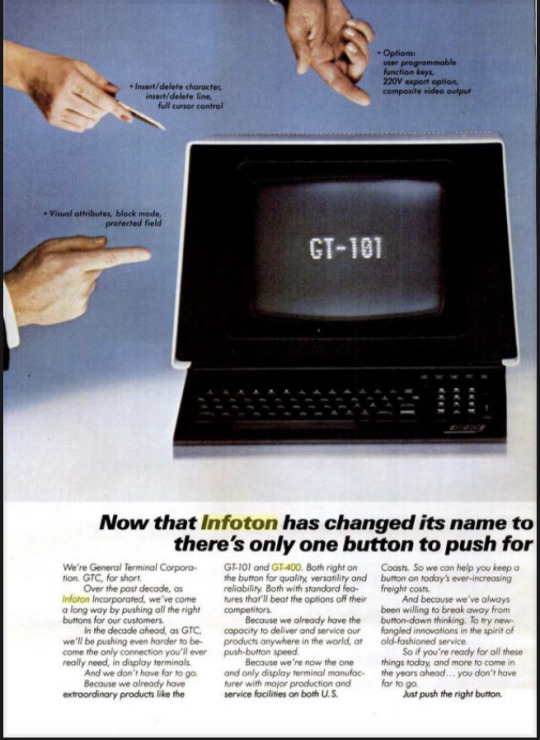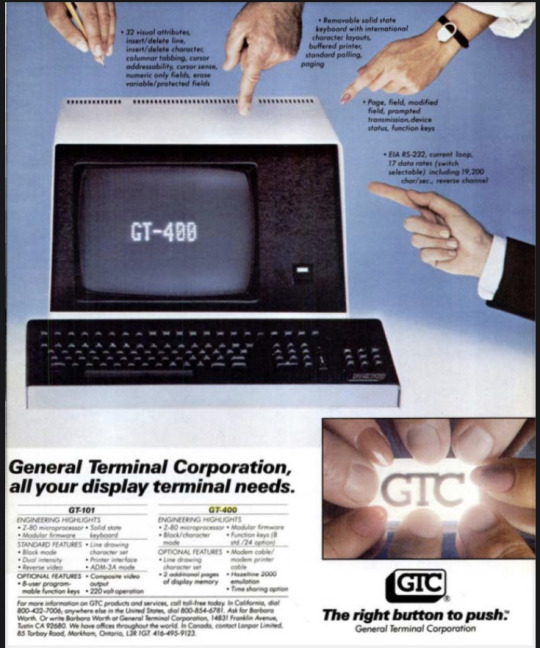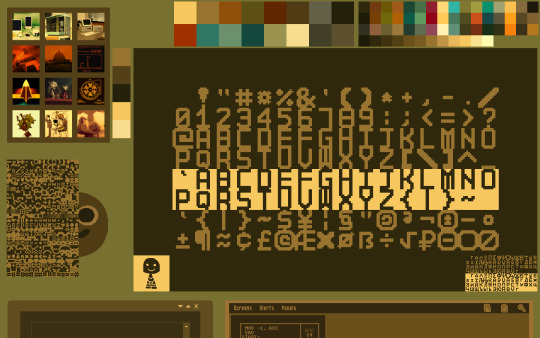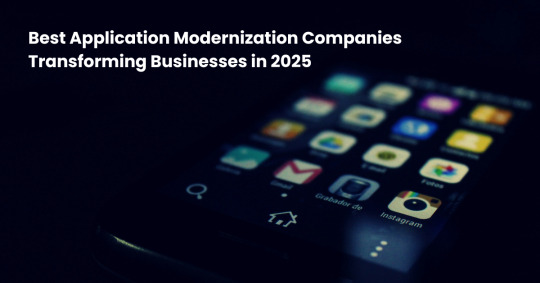#Learn ibm mainframe
Explore tagged Tumblr posts
Text
IBM Mainframe Access providers companies in USA
Find the right place for your mainframe requirement, check the list of companies that offer IBM mainframe access in USA
Rocket Software
Relational Architects International
Software Engineering of America
ASPG
Deloitte US
Maintec
2 notes
·
View notes
Text
IBM Cybersecurity Basics: Free, Online, and Self-Paced
I wish I had a course like this 20 years ago. I could have prevented being a cyber-victim. I grew up in an era without computers, even without electricity or TV. My entertainment came from the radio and books. It wasn’t until my postgraduate years that I encountered computers, thanks to studying at a university with mainframe systems. Fast forward to 1980, I got my hands on an XT PC, which…
#AI Innovations#Cloud Computing#Cybersecurity Basics#Data Processing Technologies#Educational Courses#IBM Contributions#IBM History#lifelong learning#Mainframe Development#Personal Computers#Technology Evolution
0 notes
Text
CRT Rescue
Just last week I learned that a recycling center near a city I visit was closing down and had over a dozen pallets of CRTs to get rid of. I made arrangements with the owner to stop by on a weekend date. I was especially interested in seeing “IBM terminals” having heard there were about 30 there. Working in the e waste industry myself, it was refreshing to just dive in there and take whatever without looking crazy or violating any regulations. Just the week before about a dozen people came in nerding out over tube TVs. Working in BTB e-waste and being a retro computer nerd is a bad combo, one that is tough on my mental health.
I was also the only person connected with the local Free Geek who could make it so they gave me a shopping list.

I only had an hour to look so I focused on the IBMs. I would learn that IBM at the time used a proprietary “twinax” cable and that these displays could not be connected to anything other than an IBM mainframe. I was able to put together the last two complete units with logic boards. I was disappointed I couldn’t have a VGA ready green 80’s monitor for free, but fortunately I was later told that there were a lot of local IBM mainframe fans around who’d be happy to take them.
I also found a generic TTY terminal from Renyolds and Renyolds with the classic white cursor.

I found a large office paper shredder with a very vintage look that is going to be perfect for Precious Plastic activities through Second Melt, probably the most useful and practical find.

I noticed a large all in one terminal with a mechanical keyboard wedged into a box and decided to turn it on. Fortunately it didn’t blow up but the screen did not do anything. I was hesitant but I decided to grab it for its case and keyboard. If I can’t get it working it will be a great case for when I build my WarGames inspired evil AI.


It is a General Terminal Corporation GTC-100 terminal dating to the early 80’s. After doing some digging I found that it is “teletype compatible” and workable with a USB to 25 pin serial adapter. This one’s a keeper and I’m going to try and restore it.


At the last second I grabbed an armful of 9 track IBM tapes, also for donating to the local Free Geek. I’ll keep one for display purposes.

Regretfully I wish I had spent more time there and probably won’t get back— the place has to be cleared out by years end. But I’m empowered I was able to same some stuff to distribute to like minded folks entirely on my own volition. I’m excited to get the terminal working and expect a post, possibly two on that.

#vintage#retro computing#retro gaming#crt monitor#crt tv#1980s#1980s nostalgia#80’s#80s aesthetic#retro aesthetic#ibm#ewaste#e-waste
6 notes
·
View notes
Text
"This piece aims to identify the pitfalls in thinking about what is being called an ‘algorithmic genocide’ in Gaza. I’d like to push against the exceptionalism afforded to AI; for example pieces which set military uses of AI as distinct from previous iterations of techno-warfare. Rather, the spectre of ‘artificial intelligence’ is a reification—a set of social relations in the false appearance of concrete form; something made by us which has been cast as something outside of us. And the way in which AI has been talked about in the context of a potentially ‘AI-enabled’ genocide in Gaza poses a dangerous distraction. All of the actually interesting and hard problems about AI, besides all the math, lie in its capacity as an intangible social technology and rhetorical device which elides human intention, creating the space of epistemic indeterminacy through which people act.
...The data does not “speak for itself”, neither in the context of academic research or in military applications.
Any ML model is, from its beginning, bound to a human conceptual apparatus.
...
The reification of AI, which happens at all points on the political spectrum, is actively dangerous in the context of its being taken to its most extreme conclusion: in the ‘usage' of ‘AI’ for mass death, as in the case of Gospel (‘Habsora’, הבשורה, named after the infallible word of God) and Lavender. This reification gives cover for politicians and military officers to make decisions about human lives, faking a hand-off of responsibility to a pile of linear algebra and in doing so handing themselves a blank check to do whatever they want. The extent to which these “AI systems” are credible or actually used is irrelevant, because the main purpose they serve is ideological, with massive psychological benefits for those pressing the buttons. Talking about military AI shifts the focus from the social relations between people to the technologies used to implement them, a mystification which misdirects focus and propagates invincibility.
There are things which are horrifying and exceptional about the current genocide, but the deployment of technology is not in itself one of those things; the usage of data-driven methods to conduct warfare is neither ‘intelligent’ nor ‘artificial’, and moreover not even remotely novel. As prior reporting from Ars Technica has shown about the NSA’s SKYNET program in Pakistan, Lavender is not even the first machine learning-driven system of mass assassination. I recently read Nick Turse’s Kill Anything That Moves: The Real American War in Vietnam (2013) and was struck by the parallels to the current campaign of extermination in Gaza, down to the directed-from-above obsession with fulfilling ‘body count’ as well as the creation of anarchic spaces in which lower-level operatives are afforded opportunities to carry out atrocities which were not explicitly ordered, an observation which has also been made of the Shoah. Thinking about it in this way allows us to fold AI into other discourses of technological warfare over the past century, such as the US’s usage of IBM 360 mainframe computers in Vietnam to similarly produce lists of targets under Operation Igloo White. Using technology as rhetorical cover for bureaucratized violence is not new.
The Lavender piece by Yuval Abraham states that IDF soldiers rapidly rubber-stamped bombing targets “despite knowing that the system makes what are regarded as ‘errors’ in approximately 10 percent of cases”. But even if the error rate were 0.005% it wouldn’t matter, because the ‘precision’ canard is just laundering human intent through a justification-manufacturing apparatus which has zero technical component. Abraham reports that “sources who have used Lavender in recent months say human agency and precision were substituted by mass target creation and lethality,” but in reality exactly zero human agency has been removed. He writes that “once the list was expanded to include tens of thousands of lower-ranking operatives, the Israeli army figured it had to rely on automated software and artificial intelligence…AI did most of the work instead”, but this verbiage is a perverse reversal of cause and effect to create post-hoc justification.
...
Another line from the Gospel piece reads “the increasing use of AI based systems like Habsora allows the army to carry out strikes on residential homes where a single Hamas member lives on a massive scale”. Emphasis mine—that word ‘allows’ is the hinge upon which this whole grotesque charade rests. The algorithm isn’t choosing anything; the choices already happened in the compiling and labeling of the dataset. The collecting and categorizing of data—which data on individuals’ social media or GPS movements or purchasing activity is to be used, which to be excluded—is in itself the construction of an elaborate ideological apparatus."
..
The purpose of a system is what it does, and science is a thing which people do
...We can expect the laundering of agency, whitewashed through the ideological device of 'the algorithm', to begin to be deployed in the arena of international law, given the ways in which Israel is already trying to sidestep the ‘genocidal intent’ it has been charged with at the ICJ. "The fetish of AI as a commodity allows companies and governments to sell it, particularly Israel, which still enjoys a fairly glowing reputation in the ML/AI industry and research world."
#no tech for genocide#no tech for apartheid#palestine#free palestine#gaza#isreal#genocide#apartheid#colonization#american imperialism#us politics#police state#settler police#settler colonialism#settler violence
2 notes
·
View notes
Text
Pseudo-historical project about 1912 unit record equipment computation aka the "Symbolic Analyst Processor" full stack!



(above pictures emulate the looks of what this tech stack documentation and actual use may look like, still very early in the process though)
It is still coming together by my head as I write infodump notes and research various aspects of the whole time, (including the WIMP & MERN/MEAN stack) but yk, things are coming together nicely to give some milestone project mid-way between my current phase in life and the next where I go develop a fully alternative INTJ lively stack of tools. Explanations, history dives, lively reaction studies and a couple more content suggestions related to it are on the way.
Behold, the infodumps
"Top-bottom and back up workflow" 1910 / 1912 Unit Record Equipment Tabulator Computation "Bundle" Project (Pflaumen & Utalics' SymbolicAnalystProcessor)
Information Processing Language / LISP 1.5 / Bel, A-BASIC / DIBOL, Spreadsheets, Cellular Automaton, COS-310, magnetic tape storage too, TECO / VIM, Assembly, Wirebox, Tabulator, Alphanumeric Interpreter, Printer, RTTY device, Data Recording, Bulk Data Processing Indexed Cards, 60-64 entries Deque, 4K Direct-use RAM, 12K * 24 storage devices, Phonebook, Timeclock, DateTime Calendar, Programmable, Statistics, Demographics, Voting, Ledger, Journal, Logging, Rolodex, 12 Generic-use Registers & 4 Special Registers, Catalog, ~16 Keys Pad, Customized Hexadecimal Numeric Representation for "MachineCode" Hexdumps, 4*12 bits per page of data, Macros, Paracosm, may be useful for Military & Civilian Uses, Electrical Energy (and possibly incorporates some mechanical energy too), Nouns & Verbs, "Vector" XY plotter, Lambda Calculus / Panini Grammar / Universal Turing Machine Thesis, Rotors, Ural TriodeVaccumTube "Mainframe", Interactive-Use, Hypertext Interactive Video Terminal, Memex, Modem, Electric + Radio Telegraphy, Document-processing, Word-processing, Orange Plasma Touchscreen Terminal, Time-sharing, Cash Register, Bank, Automatic Teller Machine, Vending Machine, Oracle, Typewriter / Selectric, IBM 701, IBM 1440, IBM 403, IBM System/360, OpenPOWER, F#, IBM Tellum, MUD, TextWorld, solo text-adventures, Email, AIX, z/OS, Linux for IBM mainframes, Symbolic Processing System, Autocoder, modular, IBM Lotus Suite, interface with KDE or CDE, paper handling equipment, Addventure, 12-bit basic data unit as designated word, Distributed Interactive System, VeneraFS (cladogram Parade+DolDoc), GNU Hurd / MINIX3-style Microkernel, either permissive FLOSS license or public domain waiver, extensive documentation, printed illustrated booklets, music-playback, emulator / compiler / bytecode / interpreter, analog media-friendly, mostly for didactic tinkering educational uses, multilingual reconfigurable programming, HTML+CSS, Markdown, Argdown, DMA, hardware-friendly, software development environment for direct-access programmers and aesthetic designers, sub-version control system like Git, various hardware & software implementations, museum / observatory Toymaker story, constructed languages / imaginative paracosm influences around the immersive in-world lore of the "16^12" pseudo-historical setting…
Back to the point
The list is far from exhaustive or finished, as life is so much more than meets the eye. But this should be a good start to remind myself what I am working towards, a full revamp of the last ~120 years of history with much attention and care put into making it as satisfying to me as possible, despite the very probable scenario where people take the ideas and incorporate only some of such "modules" in their own workflows. Which is fine but not taking the whole package (and only specific modules) is eventually gonna be a major learning experience for me considering the reason I revamp it all beyond control freak stuff is literally to provide less exclusive / less invasive tools that anyone can learn and customize despite being very... idiosyncratic yk.
Still welcoming suggestions and constructive criticism for such big time, I hope those textual infodumps I do every so often don't bother you too much... Cya soon!
5 notes
·
View notes
Text
5 Things You Didn't Know You Could Learn in an IBM Course
You might think IBM courses focus exclusively on mainframes and legacy systems. That assumption misses the innovative technologies IBM teaches today. Beyond the expected database and cloud content, IBM's educational programs contain surprising elements that can transform your technical capabilities. Let's explore five unexpected skills you'll acquire through IBM course offerings.
1. Design Thinking for Technical Solutions
IBM pioneered the application of design thinking to enterprise technology, and its courses teach this human-centered approach to problem-solving. You'll learn to conduct empathy interviews, create journey maps, and prototype solutions rapidly. This IBM course material transforms how you approach technical challenges, moving beyond pure engineering to consider user experience and business outcomes. The methodology includes techniques for stakeholder alignment, creative brainstorming, and iterative testing that apply to any technology project.
2. Explainable AI and Ethical Algorithm Design
While everyone talks about AI implementation, IBM courses dive deep into AI transparency and ethics. You'll learn to build models that explain their decisions, implement fairness metrics, and detect algorithmic bias. The curriculum covers regulatory compliance for AI systems, including GDPR's "right to explanation." Through IBM course exercises, you'll audit existing models for bias, implement interpretability techniques, and create documentation that non-technical stakeholders can understand.
3. Blockchain Supply Chain Applications
Beyond cryptocurrency basics, IBM teaches practical blockchain implementation for supply chain management. You'll build smart contracts for tracking shipments, implement provenance systems for authenticating products, and design consortium networks. The IBM course covers Hyperledger Fabric, teaching you to create permissioned blockchains for enterprise use. Real-world case studies include food safety tracking, pharmaceutical authentication, and sustainable sourcing verification. You'll understand how to convince stakeholders of blockchain's value beyond the hype.
4. Augmented Reality for Industrial Applications
IBM's courses include surprising content on AR development for manufacturing and maintenance. You will learn to create AR experiences that overlay digital information onto physical equipment, helping technicians perform complex repairs. The curriculum covers IBM's AR toolkit, teaching you to build applications that recognize machinery, display repair instructions, and provide real-time diagnostics. This unexpected IBM course content bridges the physical and digital worlds, preparing you for Industry 4.0 implementations.
Why These Skills Matter
These unexpected topics reflect IBM's evolution from hardware manufacturer to cognitive technology leader. Each skill addresses emerging enterprise needs that traditional IT education overlooks. Quantum computing prepares you for the next computing revolution. Design thinking ensures your technical solutions actually solve business problems. Explainable AI addresses growing regulatory requirements. Blockchain knowledge opens opportunities in supply chain transformation. AR skills position you for the industrial metaverse.
Conclusion
IBM course offerings extend far beyond traditional enterprise computing topics. These five areas represent just a sample of the innovative content available. By exploring quantum computing, design thinking, ethical AI, blockchain applications, and augmented reality through IBM's educational programs, you'll acquire skills that differentiate you in the technology market. Don't let preconceptions about IBM limit your learning opportunities. Their courses contain forward-thinking content that prepares you for technology's future, not just its past.
For more information, visit: https://www.ascendientlearning.com/it-training/ibm
0 notes
Text
Software Development in USA:
1.Software Development in USA:
The software development industry in the United States is one of the most robust and innovative sectors in the global economy. With cutting-edge technology hubs like Silicon Valley, Austin, and Seattle, the USA has been a leader in software solutions, tech startups, and groundbreaking applications for decades. In this article, we'll explore the landscape of software development in the USA, key trends, major companies, and why it remains a powerhouse in the tech world.

2. The Evolution of Software Development in the USA
The history of software development in the USA dates back to the mid-20th century, with the advent of mainframe computers and the establishment of foundational programming languages like COBOL and FORTRAN. As technology evolved, so did software capabilities, leading to the emergence of personal computers, mobile applications, and cloud-based solutions.
The rise of tech giants such as Microsoft, Apple, Google, and Amazon redefined the industry, setting new standards for software innovation. Today, American software companies lead the way in artificial intelligence, machine learning, cloud computing, and cybersecurity.
3. Key Software Development Hubs
Silicon Valley, California - Known globally as the tech capital of the world, Silicon Valley houses tech giants and thousands of startups.
Austin, Texas - Often called the 'Silicon Hills,' Austin has rapidly grown as a tech hub with a strong focus on innovation and startup culture.
Seattle, Washington - Home to Microsoft and Amazon, Seattle is a powerhouse for cloud computing and enterprise software.
New York City, New York - A financial and technological hub, NYC focuses heavily on fintech, AI, and enterprise solutions.
Boston, Massachusetts - Known for its emphasis on AI, robotics, and biotechnology software.
Emerging Trends in Software Development
Artificial Intelligence (AI) and Machine Learning (ML)
Cloud Computing and SaaS (Software as a Service)
Cybersecurity Innovations
Internet of Things (IoT)
Blockchain Technology
Augmented Reality (AR) and Virtual Reality (VR)
Major Software Development Companies in the USA
Microsoft
Apple
Google
Amazon
IBM
Oracle
Salesforce
These companies not only dominate the U.S. market but also influence global software trends.
Challenges Facing Software Development in the USA
While the USA remains at the forefront of software innovation, challenges such as cybersecurity threats, regulatory changes, and a competitive global market pose significant hurdles. Additionally, the demand for highly skilled developers continues to rise, leading to talent shortages in key tech hubs.
The Future of Software Development in the USA
The future of software development in the USA looks promising, with ongoing investments in AI, machine learning, and cloud computing. Government initiatives aimed at boosting tech education and innovation also signal growth and expansion in the coming years.
Conclusion
Software development in the USA continues to thrive, driven by innovation, robust infrastructure, and world-class talent. As new technologies emerge, the United States is poised to maintain its status as a global leader in software solutions and digital transformation.
0 notes
Text
Best Application Modernization Companies Transforming Businesses in 2025

In today's rapidly evolving digital landscape, enterprises are increasingly looking to modernize their legacy applications to stay competitive and enhance efficiency. Application Modernization Services & Solutions play a crucial role in transforming outdated systems into agile, cloud-enabled applications that align with modern business needs. Here, we list the Top 10 companies in App Modernization Services, helping organizations accelerate digital transformation and optimize their IT infrastructure.
1. Vee Technologies
As a leading Application Modernization Company, Vee Technologies specializes in end-to-end App Modernization Services that help businesses transition from legacy systems to cloud-native architectures. With expertise in reengineering applications, migrating workloads, and integrating AI-driven capabilities, Vee Technologies delivers scalable, secure, and cost-effective modernization solutions that drive digital transformation. Their customer-centric approach and innovative solutions make them a preferred choice for enterprises across various industries.
2. Accenture
Accenture is a globally recognized leader in IT consulting and modernization. Their Application Modernization Services & Solutions focus on transforming legacy applications into cloud-compatible and microservices-based architectures, enabling businesses to increase agility and scalability.
3. IBM
IBM provides robust App Modernization Services, leveraging AI and automation to reengineer enterprise applications. Their comprehensive solutions include mainframe modernization, containerization, and cloud-native transformation.
4. Cognizant
Cognizant helps organizations enhance business agility with cutting-edge Application Modernization Services & Solutions. Their expertise in DevOps, cloud migration, and legacy application replatforming ensures seamless digital transformation.
5. Infosys
Infosys offers strategic App Modernization Services, utilizing AI and cloud computing to upgrade legacy applications. Their modernization framework accelerates digital adoption, improving business operations and customer experiences.
6. Capgemini
Capgemini delivers advanced Application Modernization Services & Solutions that optimize IT landscapes through automation, AI, and cloud integration, ensuring improved agility and reduced operational costs.
7. Wipro
Wipro’s Application Modernization Company services help enterprises transition from monolithic legacy systems to modern, cloud-based environments, ensuring better performance and security.
8. HCL Technologies
HCL Technologies offers comprehensive App Modernization Services, leveraging AI, machine learning, and cloud-native solutions to enhance business resilience and efficiency.
9. TCS (Tata Consultancy Services)
TCS provides robust Application Modernization Services & Solutions, enabling enterprises to embrace digital transformation through scalable, cost-efficient, and cloud-optimized solutions.
10. DXC Technology
DXC Technology specializes in legacy application transformation, offering AI-driven App Modernization Services that streamline IT operations, enhance security, and drive business innovation.
Conclusion Selecting the right Application Modernization Company is crucial for enterprises looking to future-proof their IT systems. These Companies lead the way in delivering innovative Application Modernization Services& Solutions that enhance agility, scalability, and business continuity. Whether it's migrating to the cloud, modernizing legacy applications, or integrating AI-driven features, these top companies provide best-in-class services to help businesses stay ahead in the digital era.
0 notes
Text
The Computer Revolution: Shaping the Modern World
Computers have fundamentally transformed our lives, affecting nearly every aspect of society. From the way we communicate to how we work, learn, and entertain ourselves, the impact of computers is profound and far-reaching. This article explores the history of computers, their evolution, and their role in today’s digital landscape.
The Birth of Computing
The origins of computing date back to the early 19th century with Charles Babbage, often referred to as the "father of the computer." He designed the Analytical Engine, a mechanical device that laid the groundwork for modern computing concepts, including the use of punched cards and memory storage.
However, it wasn’t until the mid-20th century that computers began to take a more recognizable form. The development of the ENIAC in 1945 marked a significant milestone as it became the first general-purpose electronic computer. With its massive size and limited capabilities, ENIAC demonstrated the potential of electronic computation, paving the way for future innovations.
The Evolution of Computers
Mainframes and Minicomputers: The 1950s and 1960s saw the rise of mainframe computers, which were used primarily by large organizations for complex calculations and data processing. Companies like IBM dominated this market, providing powerful machines that required specialized knowledge to operate. Minicomputers emerged in the 1960s, offering smaller, more affordable options for businesses.
Personal Computers: The 1970s and 1980s marked the arrival of personal computers (PCs), which revolutionized access to computing power. The launch of the Altair 8800 in 1975 is often credited as the catalyst for the home computer revolution. Subsequently, Apple introduced the Apple II, and IBM released the IBM PC, making computers accessible to everyday consumers.
The Internet Age: The advent of the internet in the 1990s transformed computers from standalone machines to gateways for global connectivity. The World Wide Web opened up new avenues for communication, commerce, and information sharing. Computers became essential tools for businesses, educators, and individuals seeking to navigate this vast digital landscape.
Mobile Computing: The 2000s brought about the rise of laptops, smartphones, and tablets, shifting computing from static desktop environments to portable devices. This mobile revolution allowed users to stay connected and productive on the go, further integrating technology into everyday life.
Also Read -
Best PC Computer To Buy – Top Picks For 2025
Current Trends in Computing
Today, computers are more powerful and versatile than ever. Some of the key trends shaping the current landscape include:
Cloud Computing: Cloud technology allows users to store and access data and applications over the internet rather than on local devices. This shift has enabled greater collaboration, flexibility, and scalability for businesses and individuals alike.
Artificial Intelligence and Machine Learning: AI is increasingly integrated into computing, enhancing capabilities in data analysis, natural language processing, and automation. From virtual assistants like Siri and Alexa to advanced algorithms powering self-driving cars, AI is redefining what computers can do.
Quantum Computing: Though still in its infancy, quantum computing holds the promise of solving complex problems at speeds unattainable by traditional computers. Researchers are exploring applications in fields such as cryptography, medicine, and materials science.
Cybersecurity: As reliance on computers increases, so do concerns about security. Cyber threats are more sophisticated than ever, prompting organizations to invest heavily in cybersecurity measures to protect sensitive data and systems.
The Role of Computers in Society
Computers have become essential tools in various sectors, including:
Education: E-learning platforms and educational software have revolutionized teaching and learning. Students can access vast resources, engage in collaborative projects, and connect with educators worldwide.
Healthcare: Computers facilitate advanced diagnostics, telemedicine, and patient record management, improving healthcare delivery and outcomes.
Business: From data analytics to customer relationship management, computers empower businesses to operate more efficiently and make informed decisions.
Entertainment: The gaming and streaming industries have exploded, driven by advancements in computing power. High-performance computers enable immersive gaming experiences and seamless content streaming. The Future of Computing
As we look ahead, the future of computing promises even more transformative developments. Emerging technologies such as augmented reality (AR) and virtual reality (VR) are set to enhance user experiences in gaming, training, and remote collaboration. Furthermore, the continued evolution of AI will likely lead to even more intelligent systems that can learn and adapt.
Sustainability will also play a crucial role in the future of computing, with an increasing focus on energy-efficient hardware and responsible recycling practices.
Conclusion
The computer revolution has reshaped our world in unimaginable ways. From their humble beginnings to the powerful machines we use today, computers have become central to our lives, influencing how we work, learn, and interact. As technology continues to evolve, the potential for innovation is limitless, ensuring that computers will remain at the forefront of societal change for years to come.
Explore more - JayXop
1 note
·
View note
Text
What is WatsonX AI
```html
Understanding WatsonX AI: An Informational Guide for AI Enthusiasts
In the fast-paced world of Artificial Intelligence, new developments are always emerging. One standout innovation attracting attention from both AI enthusiasts and professionals is WatsonX AI. Created by IBM, WatsonX is revolutionizing AI with its unique offerings. But what exactly is WatsonX AI, and why is it so special?
The Legacy of IBM in Technology
IBM, or International Business Machines Corporation, has been a major player in the tech industry for decades. They've evolved from mainframes to modern cloud computing, always staying innovative. In the fields of Machine Learning (ML) and Artificial Intelligence (AI), IBM's contributions have been groundbreaking. Their Watson platform has been a game-changer, proving AI's potential in healthcare, customer service, and even entertainment.
Introduction to WatsonX AI
WatsonX is the next step in IBM's AI evolution. But what is WatsonX AI? It’s a suite of AI tools designed to make AI projects easier to implement and scale. Whether you’re a seasoned data scientist or just starting, WatsonX has solutions for everyone. From powerful Machine Learning models to customizable algorithms, WatsonX is setting new AI standards.
Key Features of WatsonX AI
Ease of Use: WatsonX is designed to be user-friendly, so you don’t need to be a coding expert to use it effectively.
Customizability: The platform lets you adjust algorithms and models to fit your specific needs.
Scalability: WatsonX easily scales from small projects to large enterprise applications.
Integration: It integrates seamlessly with other IBM platforms and tools, embedding AI into existing workflows smoothly.
WatsonX AI in Action
Seeing WatsonX AI in real-world scenarios can be eye-opening, especially for those new to AI. One remarkable use is in healthcare, where WatsonX analyzes large sets of medical data to help doctors make more accurate diagnoses and treatment plans. In the business world, companies use WatsonX to improve customer service by answering common questions and solving issues faster.
Media & Technology Group, LLC and WatsonX AI
At Media & Technology Group, LLC, we know how powerful AI can be in boosting business processes. By integrating WatsonX into our services like Artificial Intelligence Implementation and Marketing Automation, we’ve enhanced our offerings significantly. Our clients enjoy more efficient operations, better decision-making, and improved customer experiences.
Benefits of WatsonX AI
Time Efficiency: Automate routine tasks, freeing up time for more complex problem-solving.
Data Accuracy: Advanced algorithms ensure high accuracy in data analysis.
Cost Savings: Reducing the need for manual labor leads to significant savings over time.
Innovation: Pushes the boundaries of what’s possible, inspiring new ideas and solutions.
Getting Started with WatsonX AI
If you’re eager to explore WatsonX AI, here’s how to start:
Training: IBM offers courses and materials online to help you learn WatsonX’s basics and
0 notes
Text
REVENGE OF THE RECESSION
By unsavory I mean things that go wrong when kids grow up sufficiently poor. The acceleration of productivity we see in Silicon Valley don't seem to be destroying democracy. To a lot of people. The reason you're overlooking them is the same as opting in. Then the interface will tend to make filtering easier. If Jessica was so important to YC, why don't more people realize it? But why? 9189189 localhost 0. When I did try statistical analysis, I found immediately that it was much cleverer than I had been.
Angels you can sometimes tell about other angels, because angels cooperate more with one another. There is a kind of business plan for a new Lisp shouldn't have string libraries as good as Perl, and if you write about controversial topics you have to think you know how the world works, and any theory a 10 year old leaning against a lamppost with a cigarette hanging out of the problem. They don't even start paying attention until they've heard about something ten times. Now that I've seen parents managing the subject, I can see why Mayle might have said this. In the capital cost of a long name is not just one thing. Perl. Maybe it's more important for kids to say and one forbidden? Sometimes if you just ask that question you'll get immediate answers.
So choose your users carefully, and be slow to grow their number. Don't all 18 year olds think they know how to run the world? I think will be tolerated. What readability-per-line could be a good idea to spend some time thinking about that future. And even more, you need to know about a language before they can use it to solve a problem someone else has already formulated. What's a prostitute? I think the way to do it mainly to help the poor, not to hurt the rich.
Com/foo because that is the most innocent of their tactics. Part of what he meant was that the proper role of humans is to think, just as the proper role of anteaters is to poke their noses into anthills. Misleading the child is just a series of web pages. When a man runs off with his secretary, is it always partly his wife's fault? I calculate as follows: let g 2 or gethash word good 0 b or gethash word good 0 b or gethash word good 0 b or gethash word good 0 b or gethash word good 0 b or gethash word good 0 b or gethash word good 0 b or gethash word good 0 b or gethash word good 0 b or gethash word good 0 b or gethash word good 0 b or gethash word bad 0 unless g b 5 max. But the unconscious form is very widespread. The most useful comparison between languages is between two potential variants of the same language. Cobol were the scripting languages of early IBM mainframes. And if you think about it, then sit back and watch as people rose to the bait. Their format is convenient, and the latter because, as investors have learned, founders tend to be better at running their companies than investors. It's clear most start with not wanting kids to swear, then make up the reason afterward.
Hackers are lazy, in the unlikely absence of any other evidence, have a 99. 033600237 programming 0. But vice versa as well. The third cause of trolling is incompetence. Indeed, most antispam techniques so far have been like pesticides that do nothing more than create a new, resistant strain of bugs. If it is not the only force that determines the relative popularity of programming languages: library functions. There is hope for any language that gives hackers what they want. You can write programs to solve common problems with very little code. Every kid grows up in a fake world. But we should understand the price. In this case, it might be worth trying to decompose them.
But the problem with fairly simple algorithms. On Lisp. Early YC was a family, and Jessica was its mom. Try this thought experiment. The history of ideas is a history of gradually discarding the assumption that it's all about us. But you're safe so long as you're telling the truth. Real hackers won't turn up their noses at a new tool that will let them solve hard problems with a few library calls.
YC all the time, perhaps most of the time, writing about economic inequality is to treat it as a single phenomenon. Since the 1970s, economic inequality in a country, you have to try to baby the user with long-winded expressions that are meant to resemble English. If you want to optimize, there's a really good programming language should be both clean and dirty: cleanly designed, with a small core, and powerful, highly orthogonal libraries that are as carefully designed as the core language. That's what makes sex and drugs so dangerous. In young hackers, optimism predominates. 97% chance of being a spam, which I calculate as follows: let g 2 or gethash word bad 0 unless g b 5 max. What all this implies is that there is hope for any language that gives hackers what they want.
False positives are innocent emails that get mistakenly identified as spams. But be content to work for ordinary salaries? If you think investors can behave badly, it's nothing compared to what corp dev does and know they don't want to offend Big Company by refusing to meet. They do a really good programming language should be interactive, and start up fast. I'm excessively attached to conciseness. If you understand them, you can safely talk to them, because you tend to get used to it and take it for granted. How do you recognize good founders? And thought you should check out the following: http://www. It wasn't that they were stupid. Imagine what it would do to you if at mile 20 of a marathon, someone ran up beside you and said You must feel really tired. Surely that sort of thing a right-wing radio talk show host would say to stir up his followers.
#automatically generated text#Markov chains#Paul Graham#Python#Patrick Mooney#gethash#languages#form#b#word#topics#versa#time#plan#language#Mayle#radio#something#thing#wife#truth#YC#times#Perl#core#things#cigarette
0 notes
Text
Understanding the fundamentals of business automation

Automation has impacted practically every industry throughout the years, including healthcare systems, assembly lines, and ATMs. However, automation is being elevated to a whole new level by machine learning and artificial intelligence (AI). The way people and machines interact is changing as a result of this so-called "intelligent automation," which enables organizations to grow their clientele, boost productivity, and succeed in competitive marketplaces. In actuality, studies demonstrate the enormous financial advantages of automation. According to the IBM Institute for Business Value, AI-enabled automation will produce a labor value of billions of dollars in 2022 alone. This essay examines how business automation is evolving, why it's important now, and what to think about if you want to use automation in your own company.
Business automation: What is it?The use of technology to automate monotonous operations and free up employees for higher-value work is known as business automation. This covers robotic process automation (RPA), business process automation (BPA), and automation driven by artificial intelligence. Automation used to require enormous mainframes and a team of specialists to maintain them. These days, businesses of all sizes may access the capabilities thanks to cloud-based automation tools.
The following are some examples of business automation types:
1. Basic automation: Basic automation is the process of automating basic, elementary tasks. Basic automation technologies digitize repetitive activities with little to no coding, reducing errors and speeding up transactional activity. Two instances of basic automation are RPA and business process management (BPM). 2. Process automation: Process automation maintains consistency and openness in company processes. Process automation, which is frequently managed by specialized software, can boost output and efficiency while also providing insightful business data. Examples of process automation include workflow automation and process mining.
3. Advanced automation: This type of automation integrates many systems inside an organization by combining human and machine capabilities. Advanced automation, which facilitates intricate procedures, depends on unstructured data in conjunction with machine learning, natural language processing, and analysis. It encourages decision support for specialized work and knowledge management.
4. Intelligent automation: AI-powered intelligent automation enables robots to "learn" and decide for themselves depending on scenarios they have seen and examined. AI-powered virtual assistants, for instance, can lower expenses in customer service while facilitating more intelligent interactions between customers and human workers. An improved level of customer service is the outcome.
What makes business automation crucial?
Automation is a wonderful approach to accelerate business growth and streamline processes, regardless of the size of your company. Automation tools allow you to shift human labor to other areas of the business by substituting machine labor for human labor.
Businesses must continuously use best practices and tested automation software across all workflows to fully benefit from automation. This includes streamlining internal procedures and enabling faster-digitized consumer experiences.
Nevertheless, not every solution has every piece of technology required to automate end-to-end processes. This may result in several-point solutions, increased expenses, and a scalability issue.
Business automation advantages: Business automation is essential in a world that is changing quickly. It can be difficult to foresee which customer behaviors, such as sharply changing demand or increased health and safety concerns, would endure beyond the pandemic.
However, you do have some control over how you handle the experiences you give your clients. You can improve or adjust these experiences with automation, particularly when it's paired with AI. This will increase revenue, make better use of your resources, and boost customer pleasure. Using an automation platform that assists you in doing the following is one of the greatest ways to accomplish this:
1. Identify procedures: Identify areas of your business where there are inefficiencies or hotspots to assist decide where automated procedures can have the biggest impact. Modeling and process mining are involved in this.
2. Apply intelligence: Make recommendations for actions based on data from automating your processes using AI and machine learning, freeing up personnel for more strategic duties.
3. Expand your personnel: Create RPA tools and send out digital workers to work alongside people whenever increased productivity may be attained or when support is required.
4. Automate core operations: To satisfy business demands, apply fundamental automation capabilities—document processing, workflow orchestration, content services, and decision management—to critical operational areas.
#Business Automation Experts#Business Automation Consultants#Business Process Consultant#Business Management Solutions
0 notes
Text
What is z/OS in Mainframe?
Originally designed for large-scale computations, Mainframes now meet modern enterprise demands. From early models to today’s sophisticated systems, mainframes showcase continuous innovation.
At the heart of modern mainframe computing is z/OS, IBM’s premier operating system for Z series mainframes. z/OS provides a reliable, secure, and scalable platform for mission-critical applications, supporting diverse workloads from batch processing to online transaction processing (OLTP).
Core Features of z/OS
High Availability and Scalability : z/OS is renowned for its high availability, designed to minimize downtime and ensure continuous operation during hardware failures or system upgrades. Its scalability allows organizations to handle increasing workloads without compromising performance.
Advanced Security Mechanisms : Security is paramount in today’s digital landscape, and z/OS excels here. It offers advanced encryption, multi-level security policies, and rigorous access controls, making it a preferred choice for industries like finance, healthcare, and government where data integrity and confidentiality are essential.
Workload Management : Efficient workload management is vital for optimal system performance. z/OS’s Workload Manager (WLM) dynamically allocates resources based on workload priorities, ensuring responsive and efficient operations across all applications.
Technical Architecture of z/OS
System Components and Structure: The architecture of z/OS includes numerous components working in harmony for exceptional performance. Key components like the Job Entry Subsystem (JES), Resource Management Facility (RMF), and System Management Facility (SMF) are crucial to its functionality.
Virtualization and Resource Management: Virtualization is central to z/OS, allowing multiple logical partitions (LPARs) to run on a single physical mainframe. The z/OS hypervisor, PR/SM (Processor Resource/System Manager), ensures efficient resource utilization and workload isolation.
Subsystems and Middleware Integration: z/OS supports subsystems and middleware, including CICS (Customer Information Control System), IMS (Information Management System), and DB2. These tools are essential for transaction processing, database management, and application integration, enhancing the platform’s versatility.
The Future of z/OS
Innovations and Technological Advancements : The future of z/OS is promising, with continuous innovations. IBM is enhancing z/OS with machine learning, artificial intelligence, and advanced analytics, elevating its capabilities to meet modern enterprise demands.
Integration with Modern Technologies : z/OS integrates with contemporary technologies such as cloud computing, blockchain, and the Internet of Things (IoT). These integrations transform z/OS into a versatile platform, supporting a wide array of modern applications and services.
Combining decades of innovation with cutting-edge features, z/OS delivers a powerful and versatile platform. Its role in supporting mission-critical applications across various industries underscores its importance, reaffirming its position as a leader in enterprise computing.
0 notes
Text
Klara Wishlist (2024-03.2)

PREFACE




Braindump1 (text-only)
Klara Kér
Female Sex
NB? gender
August 1st 1998
Leo / Lepio
Autistic & lessened ADD
Canadian citizenship
5'8"
144 lbs
Tan skintone
Hazel eyes
Dark brown mid-short hair
Amber earmuffs
Facemasks
Cloven Hoof Shoes
Soft warm natural dark lookbook / wardrobe?
Local friends tribe
Part of a inclusive witch coven
GLOSS maintainer & integral committee power-user groups
Common Lisp copyleft multimedia toolbox (Trial Engine-based?)
Tuxedo Computers builds (GLOSS hardware, custom multiboot, custom branded style for whole machine, mid-range specs on Linux with plenty of peripherals...)
Tuxedo light notebook as laptop
RAID6 NAS 48 TB with double (12 TB) parity each
LTO Tape Storage for mass data facilities
Apple iMac M3-Max 24GB RAM equivalent-system but fully POSIX & FSF-compliant open source computer?
OpenPOWER libre Microwatt build?
IBM LinuxOne mainframe for business intents?
RISC-V embedded dumbphone kinda like KaiOS?
Pinephone Convergence Beta?
Retro computer hardware & software collection
"Ashur" (2014) as home server for Git, RSS, Quakeworld & personal websites & other non-critical lightweight services
ePaper RSS ticker page display?
Writing creative technical documentation for sidestream & obsoleted systems as article threads?
Personalized books & desktop widget plasmoids?
Sovereign online (Monero) shop & blogs
Sovereign tech infrastructure (including Typex rotor machines & RTTY shortwave radio equipment)
Acquiring my home as full ownership (aka fully paid mortgage)
Decent lot / domain (depends alot on wealth & context)
Decent electric vehicle (probably converting a retro VW Beetle car to electric to fully avoid DRM car spywares)
Financial independence & decent wealth + social status to accomplish constructive historical deeds
Luxuries, POSIX + Linux certification paths & other tech certifications
Studious learn, note & iterate daily workflow (Udemy, Domestika, Zenva, GameDev.tv ...)
Safe & libre cyberware, biomods... aka ethical technologies mostly?
Spiritual community & politically active locally and globally
Ava (social assistance synthetic-tier android ENFP erudite blonde, romance or BFF?)
Shoshona (black angora housecat)
University Doctorate as historian/philosopher, with plenty of extra credits from other classes graduated like VLSI integration & probabilistic linguistics for instance
Historian / Multimedia Artist & Programmer combo / Data Engineer
Small bookstore librarian & Pflaumen Coop "autonomous worker"
Plenty of time & energy (~600 years healthy yet active lifecycle)
Constructed language and its localizations
Historical Figures to emulate (especially those in bold)
Naomi Wu
Nicky Case
Yukari Hafner
Ada Lovelace
Klára Dán von Neumann
Christopher E. Lee
John McCarthy
Nicole-Reine Lepaute
Sherman Fairchild
Ken Olsen
Tom Fulp
Linus Torvalds
Richard Stallman
Hedy Lamarr
Pedro II of Brazil
Terry A. Davis
Ida Rhodes (& the other ones from Hidden Figures overall?)
Joyce Aylard
Coraline Ada Ehmke
Elizabeth Gurley Flynn
Valerie Aurora
Christina of Sweden
Gustavus Adolphus
Cathy Marshall
Marie Curie
Konrad Zuse
Margaret Hamilton
Mabel Addis
Dona Bailey
Frances Spence
Sophie Wilson
Adele Goldberg
Lynn Conway
Karen Catlin
Wendy Hall
Pamela Hardt-English
Borka Jerman Blažič
Hypatia of Alexandria
Enheduanna (Akkadian priestess and first author)
Perictione
Tapputi
Catherine de Parthenay
Anna Åkerhielm
Catherine Jérémie
Wang Zhenyi
Sofya Kovalevskaya
Emmy Noether
Ken Silverman
Chris Sawyer
Irene Stegun
Steve Wozniak
Brian Kernighan
Douglas McIlroy
Braindump2 (multimedia)
?
Appearance
Occupations
Organizations
Skills
Possessions
Context
Politics
Superpowers
Chronokinesis
True Polymorph
Photographic memory
Hypercompetence
Polyglot (Infernal, abyssal, celestial...)
Summary
POSTFACE
0 notes
Text
IBM Watsonx Assistant For Z V2’s Document Ingestion Feature
IBM Watsonx Assistant for Z
For a more customized experience, clients can now choose to have IBM Watsonx Assistant for Z V2 ingest their enterprise documents.
A generative AI helper called IBM Watsonx Assistant for Z was introduced earlier this year at Think 2024. This AI assistant transforms how your Z users interact with and use the mainframe by combining conversational artificial intelligence (AI) and IT automation in a novel way. By allowing specialists to formalize their Z expertise, it helps businesses accelerate knowledge transfer, improve productivity, autonomy, and confidence for all Z users, and lessen the learning curve for early-tenure professionals.
Building on this momentum, IBM is announce today the addition of new features and improvements to IBM Watsonx Assistant for Z. These include:
Integrate your own company documents to facilitate the search for solutions related to internal software and procedures.
Time to value is accelerated by prebuilt skills (automations) offered for typical IBM z/OS jobs.
Simplified architecture to reduce costs and facilitate implementation.
Consume your own business records
Every organization has its own workflows, apps, technology, and processes that make it function differently. Over time, many of these procedures have been improved, yet certain specialists are still routinely interrupted to answer simple inquiries.
You can now easily personalize the Z RAG by ingesting your own best practices and documentation with IBM Watsonx Assistant for Z. Your Z users will have more autonomy when you personalize your Z RAG because they will be able to receive answers that are carefully chosen to fit the internal knowledge, procedures, and environment of your company.
Using a command-line interface (CLI), builders may import text, HTML, PDF, DOCX, and other proprietary and third-party documentation at scale into retrieval augmented generation (RAG). There’s no need to worry about your private content being compromised because the RAG is located on-premises and protected by a firewall
What is Watsonx Assistant for Z’s RAG and why is it relevant?
A Z domain-specific RAG and a chat-focused granite.13b.labrador model are utilized by IBM Watsonx Assistant for Z, which may be improved using your company data. The large language model (LLM) and RAG combine to provide accurate and contextually rich answers to complex queries. This reduces the likelihood of hallucinations for your internal applications, processes, and procedures as well as for IBM Z products. The answers also include references to sources.
Built-in abilities for a quicker time to value
For common z/OS tasks, organizations can use prebuilt skills that are accessible. This means that, without specialist knowledge, you may quickly combine automations like displaying all subsystems, determining when a program temporary fix (PTF) was installed, or confirming the version level of a product that is now operating on a system into an AI assistant to make it easier for your Z users to use them.
Additionally, your IBM Z professionals can accelerate time to value by using prebuilt skills to construct sophisticated automations and skill flows for specific use cases more quickly.
Streamlined architecture for easier deployment and more economical use
IBM Watsonx Discovery, which was required in order to provide elastic search, is no longer mandatory for organizations. Alternatively, they can utilize the integrated OpenSearch feature, which combines semantic and keyword searches to provide access to the Z RAG. This update streamlines the deployment process and greatly reduces the cost of owning IBM Watsonx Assistant for Z in addition to improving response quality.
Use IBM Watsonx Assistant for Z to get started
By encoding information into a reliable set of automations, IBM Watsonx Assistant for Z streamlines the execution of repetitive operations and provides your Z users with accurate and current answers to their Z questions.
Read more on govindhtech.com
#IBM#WatsonxAssistant#ZV2Document#IBMZ#IngestionFeature#artificialintelligence#AI#RAG#WatsonxAssistantZ#retrievalaugmentedgeneration#IBMWatsonx#automations#technology#technews#news#govindhtech
0 notes